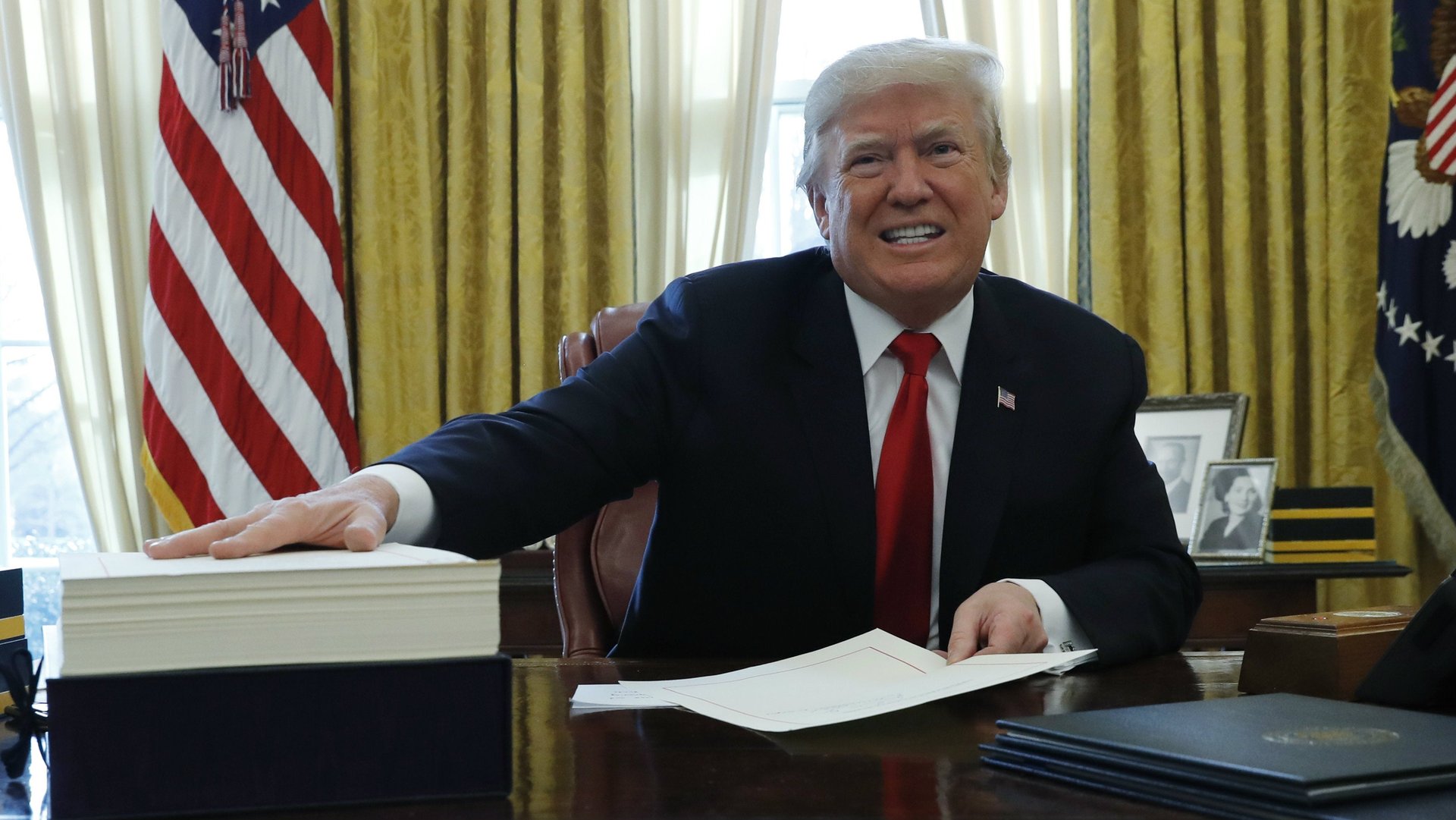Trump’s tax cuts aren’t paying for themselves
When Donald Trump signed his landmark tax cut last year, he didn’t mention the deficit or the debt, despite warnings from nearly every forecaster that the bill would drive up American borrowing. His Treasury Secretary, Steve Mnuchin, confidently asserted that the economic boost provided by the tax cuts would make up for any shortfall in revenue that might result.


When Donald Trump signed his landmark tax cut last year, he didn’t mention the deficit or the debt, despite warnings from nearly every forecaster that the bill would drive up American borrowing. His Treasury Secretary, Steve Mnuchin, confidently asserted that the economic boost provided by the tax cuts would make up for any shortfall in revenue that might result.
Now that the 2018 fiscal year is over (as of Oct. 1), we can say with some confidence that the cuts have not begun to pay for themselves yet. The budget deficit has swollen under Trump’s hand to $782 billion, some $116 billion more than the year before. The wider gap can be attributed entirely to a shortfall in tax revenue; in particular, corporate tax receipts plunged $92 billion year-on-year.
The best way to compare spending, revenues, and borrowing across time is to measure it relative to the total economy. This chart shows how taxation and spending has changed since the tax law was enacted in Dec. 2017, and compares the results with what forecasters at the Congressional Budget Office (CBO) expected before the tax law was signed as well as the past 50 years of policy:
Thanks to a growing economy, the US spent less this year as a share of GDP despite a nominal increase in outlays of $129 billion. But as a result of the tax bill, revenue fell 0.7 percentage points of GDP, driving up the deficit. In absolute terms, the US collected $13 billion more in revenues this year than the previous one—but if the old tax policies still held, it would have collected another $200 billion this year, according to a budget forecast created by the CBO in June 2017.
This isn’t a huge surprise. In April 2018, the CBO’s annual budget forecast predicted that the combination of the president’s tax and spending policies would increase US borrowing by $2.7 trillion over the next decade. It said that the cost would come from $1.7 trillion in lost revenues, and $1 trillion in increased spending. And that’s after accounting for a projected $1.1 trillion in revenues generated by the stimulative power of lower tax rates endorsed by the Republican party.
A spokesperson for the White House Council of Economic Advisers (CEA) noted that the tax law’s costs will appear before its benefits, thanks to provisions that allow for the immediate expensing of business investment and the delay until those new investments begin generating economic value. On a 10-year horizon, Trump’s economic team expects he will break even on the tax bill, making them almost alone among other forecasters.
In particular, Kevin Hassett, the chair of the CEA, argued in September that “the notion that the corporate tax side has about paid for itself is clearly in the data.” What he meant, it turns out, is that the $330 billion forecast cost of the changes to the corporate tax code should be more than paid for by the growth generated by the entire tax bill, which features a lot more than just corporate tax cuts. The hundreds of billions in other costs—and the growing interest on the debt—will have to be borne by future taxpayers.
A growing number of economists now argue that policymakers shouldn’t worry about deficits and instead focus on government spending and taxation tailored to achieve broader economic goals. However, Republican leaders like Senator Mitch McConnell are now arguing that deficits caused by their policy of borrowing to fund tax cuts should justify reductions in Medicare and Social Security, a likely outcome if Republicans maintain control of Congress after the Nov. 6 midterm election.